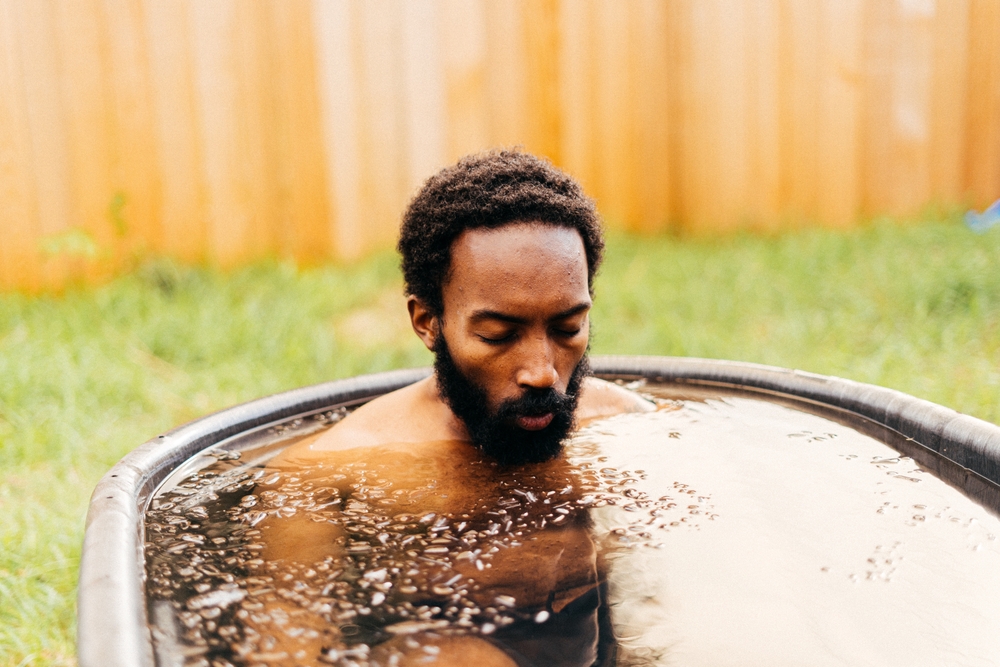In recent years, cold-water immersion has surged in popularity, captivating wellness enthusiasts with bold promises of reduced inflammation, enhanced mental clarity, and accelerated recovery. Once relegated to the extreme fringes of health practices, techniques ranging from controlled ice baths to spontaneous polar plunges have now become common topics of discussion on social media and wellness blogs. However, while many enthusiasts tout its miraculous effects, recent scientific investigations urge caution and a deeper examination of these claims.
A comprehensive meta-analysis conducted by researchers has provided new insights into the practice. The study compiled data from 3,177 participants across 11 investigations, focusing on various exposure methods that use water temperatures at or below 59°F. This large-scale review marks a significant step in understanding the underlying science of cold-water immersion and offers a more nuanced view of its benefits and limitations. The research challenges simplistic narratives by highlighting that the physiological responses to cold exposure are complex and multifaceted.
The paradox of inflammation response
One of the most counterintuitive findings of recent research is the relationship between cold exposure and inflammation. Many practitioners of cold-water immersion seek its reputed anti-inflammatory benefits, expecting the icy shock to calm the body’s stress response. Yet, the study reveals that, immediately following immersion, there is often a measurable increase in inflammatory markers. This initial surge mirrors the body’s reaction to the stress of vigorous exercise, suggesting that the anti-inflammatory effects may not be instantaneous.
This paradox underscores the complexity of our body’s endocrine and immune responses. It appears that the initial inflammatory spike could serve as a trigger for subsequent healing processes. In other words, the temporary rise in inflammation might be part of a broader physiological cascade that ultimately leads to reduced inflammation over a longer period. While the immediate response can be unsettling for some, experts suggest that understanding this biphasic reaction is crucial for optimizing cold-water immersion practices and aligning expectations with scientific reality.
Time-dependent benefits
Timing plays a crucial role in the effectiveness of cold-water immersion. Participants in the study consistently reported that while immediate relief from stress was elusive, significant benefits emerged approximately 12 hours after exposure. These delayed responses included improvements in overall stress levels, better sleep quality, and enhanced life satisfaction. Such findings imply that the benefits of cold-water immersion may be part of a longer, more complex recovery process rather than an immediate fix.
The time-dependent nature of the benefits suggests that the body’s recovery mechanisms require a period of adjustment after the shock of cold exposure. This observation encourages a more measured approach to cold-water practices, where the focus shifts from instant gratification to sustained, gradual improvements in well-being. Individuals incorporating these methods into their wellness routines might find it more beneficial to track their progress over days or weeks rather than expecting immediate results after a single session.
Demographic considerations and research gaps
Despite the growing enthusiasm for cold-water immersion, significant gaps remain in our understanding of its long-term effects, particularly across diverse populations. The majority of current studies have predominantly focused on male participants and single-session exposures, leaving questions unanswered about how different genders and longer-term practices affect outcomes. These research gaps limit our ability to generalize findings and may mask important variations in how cold-water immersion impacts health.
Future studies will need to incorporate more diverse participant groups and examine the cumulative effects of repeated exposure over time. Such research is essential to identify potential risks, benefits, and optimal protocols for different demographics. Until more comprehensive data is available, individuals—especially those with pre-existing conditions—should approach cold-water immersion with careful consideration and ideally under medical supervision.
Safety protocols and best practices
For those eager to explore cold-water immersion, adherence to established safety guidelines is essential. Medical professionals emphasize the importance of a gradual approach, particularly for beginners. Starting with brief exposures to moderately cold water, typically in the range of 50–55°F, allows the body to acclimate without undue shock. This cautious method can help minimize potential risks, especially for individuals with cardiovascular issues or other underlying health concerns.
Experts recommend that newcomers consult with healthcare providers before embarking on regular cold-water practices. As with any wellness trend, personal safety should remain the top priority. By taking measured steps and listening to one’s body, enthusiasts can better manage the challenges posed by the initial inflammatory response and gradually build tolerance to colder temperatures. Adopting a consistent yet mindful approach can maximize the potential long-term benefits while safeguarding overall health.
Future implications and research directions
As interest in cold-water immersion continues to grow, so does the need for more comprehensive, evidence-based guidance. Researchers are calling for longitudinal studies that examine the long-term effects of repeated cold exposure across different populations. These future investigations could unveil critical insights into optimal exposure durations, frequencies, and temperature thresholds that maximize benefits while minimizing risks.
In the meantime, the current body of research serves as a reminder that not all popular wellness trends are backed by immediate, unequivocal benefits. The evolving understanding of cold-water immersion highlights the importance of scientific scrutiny and the need for consumers to remain informed and cautious. As the scientific community continues to explore the complexities of the body’s response to cold, individuals are encouraged to balance enthusiasm with prudence, integrating new practices into their lives in a safe, measured manner.
The journey into cold-water immersion represents a fascinating intersection of ancient practices and modern science. While the allure of a quick fix is strong, true wellness may depend on a deeper appreciation of the body’s intricate recovery processes. With ongoing research and a commitment to safety, the icy plunge might yet prove to be a powerful tool in the broader pursuit of health and well-being.
















